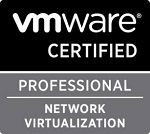What is vSphere Guest Operations
 Recently I’ve been heavily utilizing vSphere Guest Operations API for automating vCenter patching. vSphere Guest Operations (GuestOps) is an API, which allows you to run commands on a virtual machine without needing to connect to it over the network. All you need is credentials to the vCenter managing the virtual machine and to the virtual machine itself.
Recently I’ve been heavily utilizing vSphere Guest Operations API for automating vCenter patching. vSphere Guest Operations (GuestOps) is an API, which allows you to run commands on a virtual machine without needing to connect to it over the network. All you need is credentials to the vCenter managing the virtual machine and to the virtual machine itself.
GuestOps can be called by using an Invoke-VMScript PowerCLI cmdlet in the following format:
> Invoke-VMScript -ScriptText “uname -a” -vm vc01 -GuestUser root -GuestPassword VMware1!
Cmdlet will talk to the vCenter, vCenter will talk to ESXi host, ESXi host will talk to VMware Tools and, eventually, VMware Tools will run the command on the Guest OS.
It worked well for me when I was running commands on VCSA 6.0 VM (managed by another vCenter), but after patching and upgrading this VM to VCSA 6.7 I encountered the following error:
Error occured while executing script on guest OS in VM ‘vc01’. Could not locate “Powershell” script interpreter in any of the expected locations. Probably you do not have enough permissions to execute command within guest.
It’s obvious from the error message that cmdlet is doing something wrong, since it’s supposed to use bash in Linux, not PowerShell.
Enable Debugging in VMware Tools
To better understand what was going on, I logged in to VCSA via SSH and enabled VMware Tools debugging (see KB1007873 for instructions on how to do that) and restarted Open VM Tools:
# systemctl restart vmtoolsd.service
After running the Invoke-VMScript cmdlet again, this is what I noticed in vmsvc.log debug log:
[vix] VixTools_StartProgram: User: root args: progamPath: ‘cmd.exe’, arguments: ‘/C powershell -NonInteractive -EncodedCommand cABvAHcAZQByAHMAaABl…
So it wasn’t just a misleading PowerCLI error message, Invoke-VMScript was actually trying to call a PowerShell command using Windows command interpreter on a Linux VM.
Solution
My guess is that since VMware has changed underlying operating system on VCSA from SUSE Linux to Photon OS, Invoke-VMScript can no longer properly identify the underlying OS and defaults to Windows.
Simple solution to this problem is to give a helping hand to Invoke-VMScript cmdlet and specify interpreter using -ScriptType Bash parameter. This is what a proper resulting debug log message will look like:
[vix] VixToolsStartProgramImpl: started ‘”/bin/bash” -c “bash > /tmp/vmware-root/powerclivmware159 2>&1 -c \”uname -a\””‘, pid 7456






